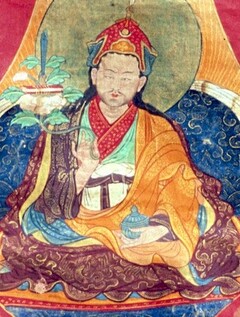Chokling Tersar Series
English (75) | Deutsch (6) | Español (9) | Français (10) | Italiano (1) | Nederlands (1) | 中文 (8) | བོད་ཡིག (75)
Texts related to the Chokling Tersar (mchog gling gter gsar), the New Treasures of Chokgyur Lingpa (1829–1870):
English (75) | Deutsch (6) | Español (9) | Français (10) | Italiano (1) | Nederlands (1) | 中文 (8) | བོད་ཡིག (75)
Texts related to the Chokling Tersar (mchog gling gter gsar), the New Treasures of Chokgyur Lingpa (1829–1870):

Chokgyur Dechen Lingpa
Courtesy of Himalayan Art Resources
Vajrayāna Buddhism places restrictions on the reading and practice of certain texts, which are intended only for those who have received the requisite empowerments, transmissions and instructions.
If you are unsure as to whether you are entitled to read or practice a particular text please consult a qualified lineage-holder.